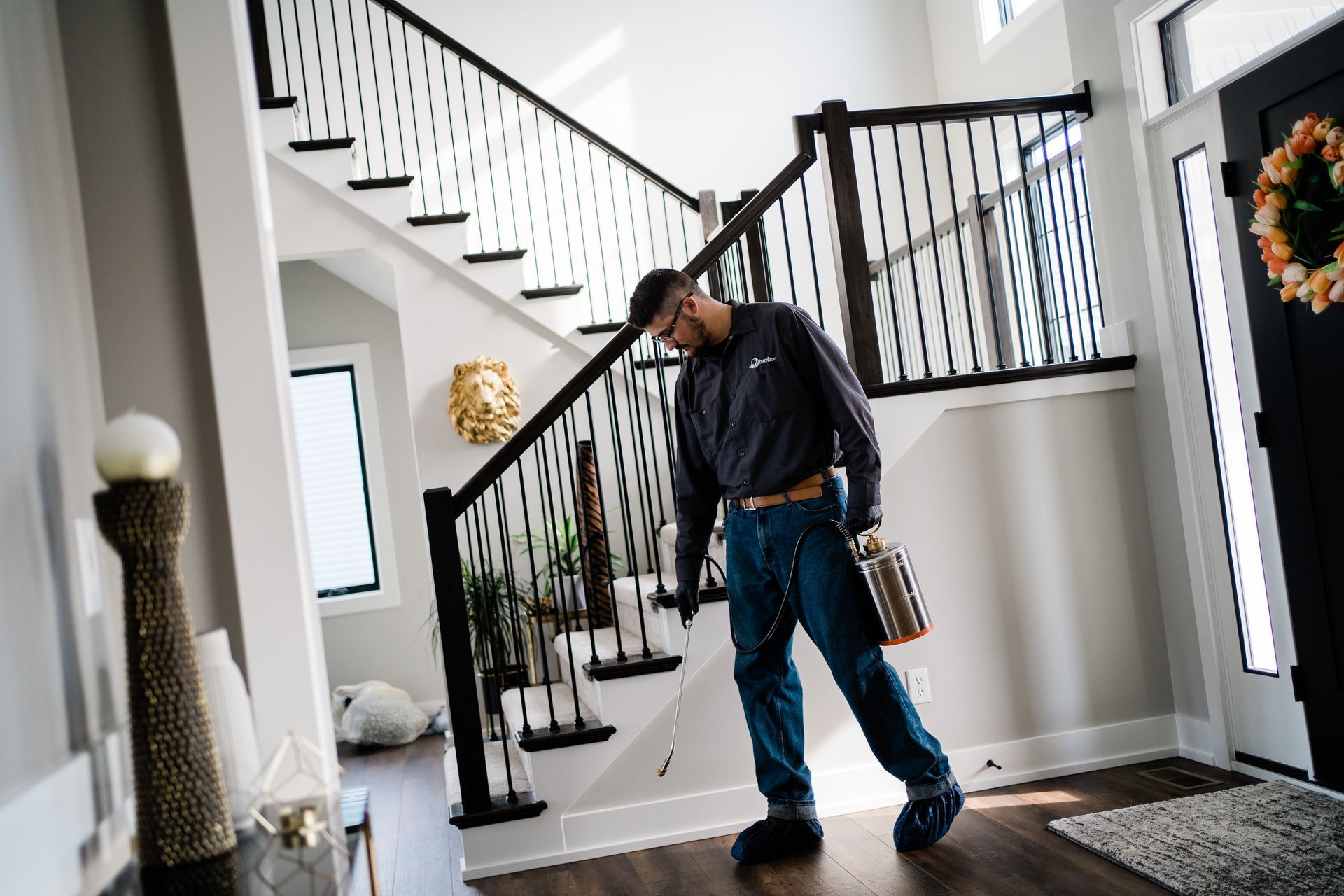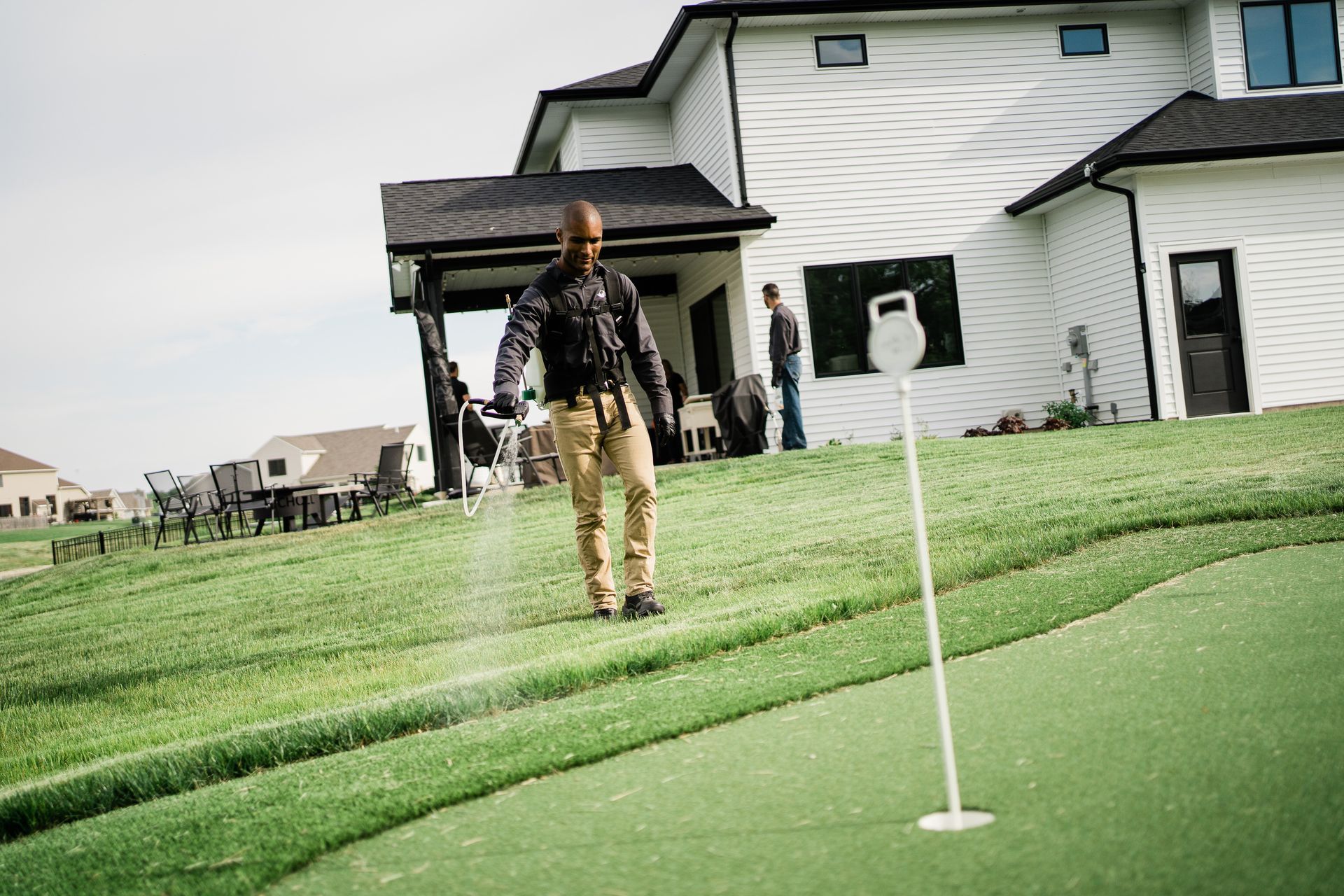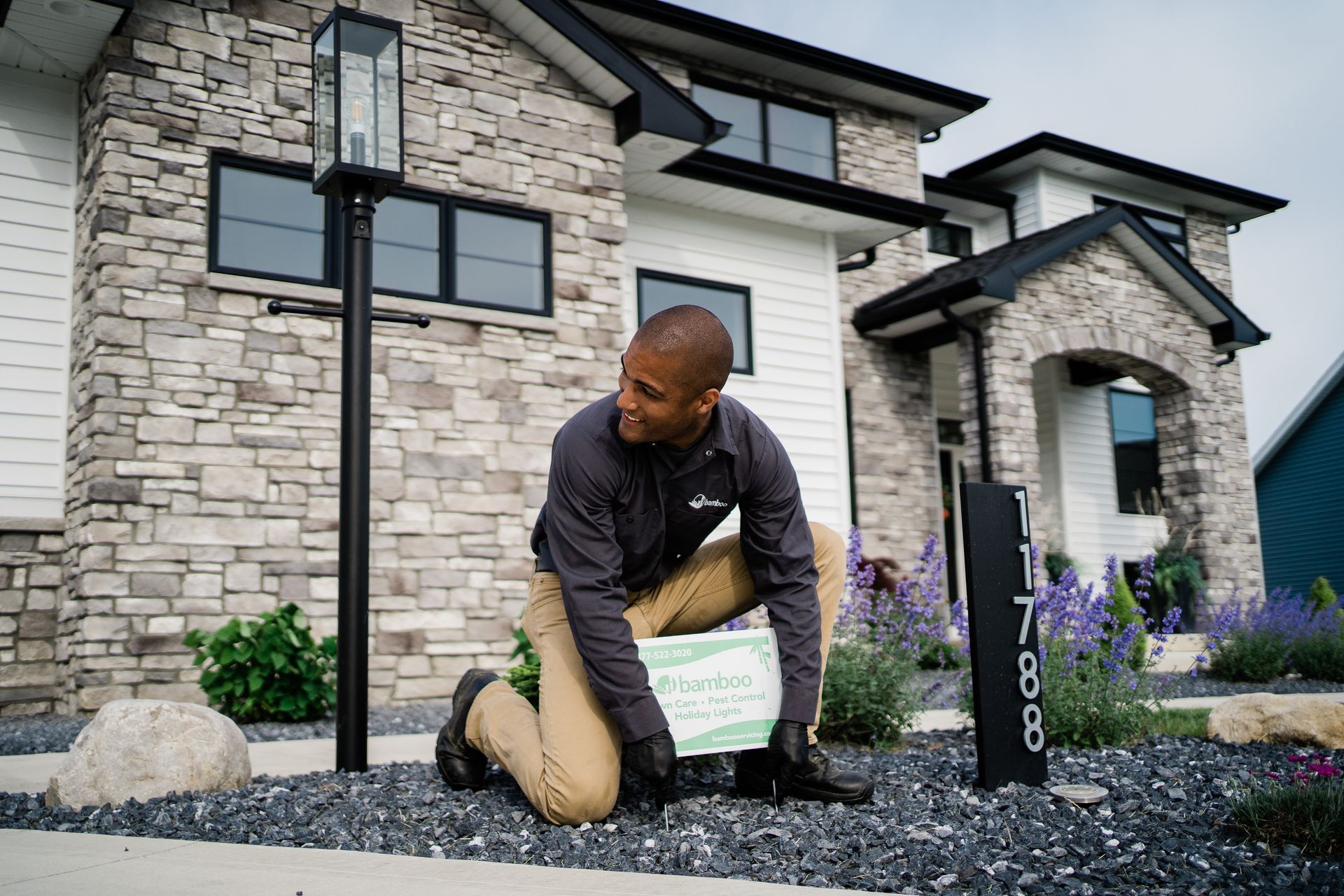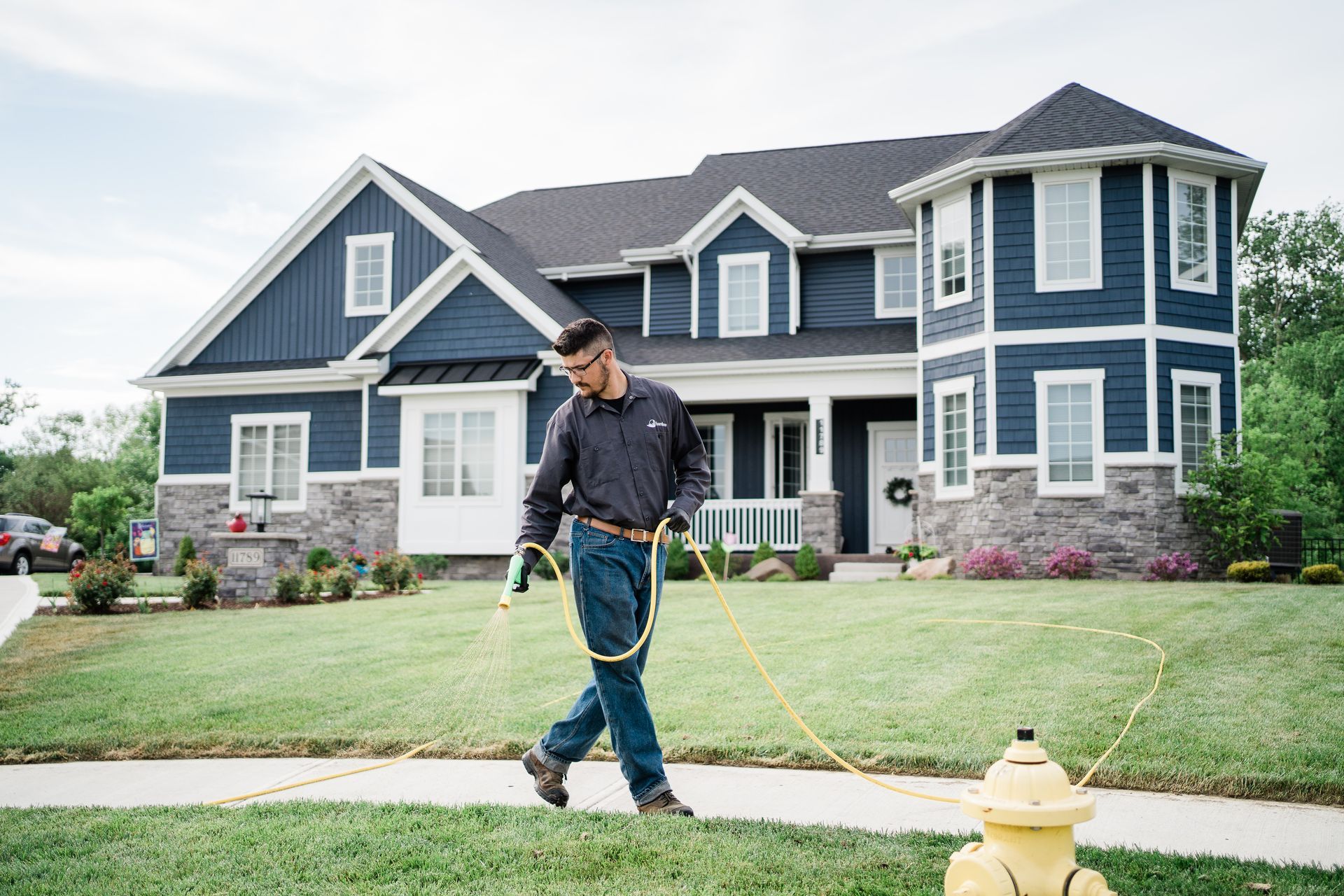When Pest Control Comes, Where Do They Spray?
Where do pest control technicians spray?
If you've ever had a
pest control service visit your home, you may wonder, "Where do they spray?" While the goal of pest control is clear—eliminate and prevent pests—the specific areas where professionals spray can vary depending on the type of pest and the layout of your home. Understanding these areas can help you prepare for a visit and ensure that the treatment is effective. Let’s take a closer look at the most common places pest control technicians target when they come to spray.
1. The Exterior Perimeter: Your First Line of Defense
The first place pest control specialists usually focus on is the exterior of your home. This is the critical line of defense, as many pests enter homes from the outside. Technicians will typically spray around the foundation, near windows and doors, and in other places where pests may find their way inside.
Spraying along the exterior creates a protective barrier that keeps pests like ants, cockroaches, and spiders from entering your home. This perimeter spray is especially important during certain seasons, like spring and fall, when many pests are actively looking for a way indoors. Even if pests are already inside your home, treating the outside perimeter helps prevent more from getting in.
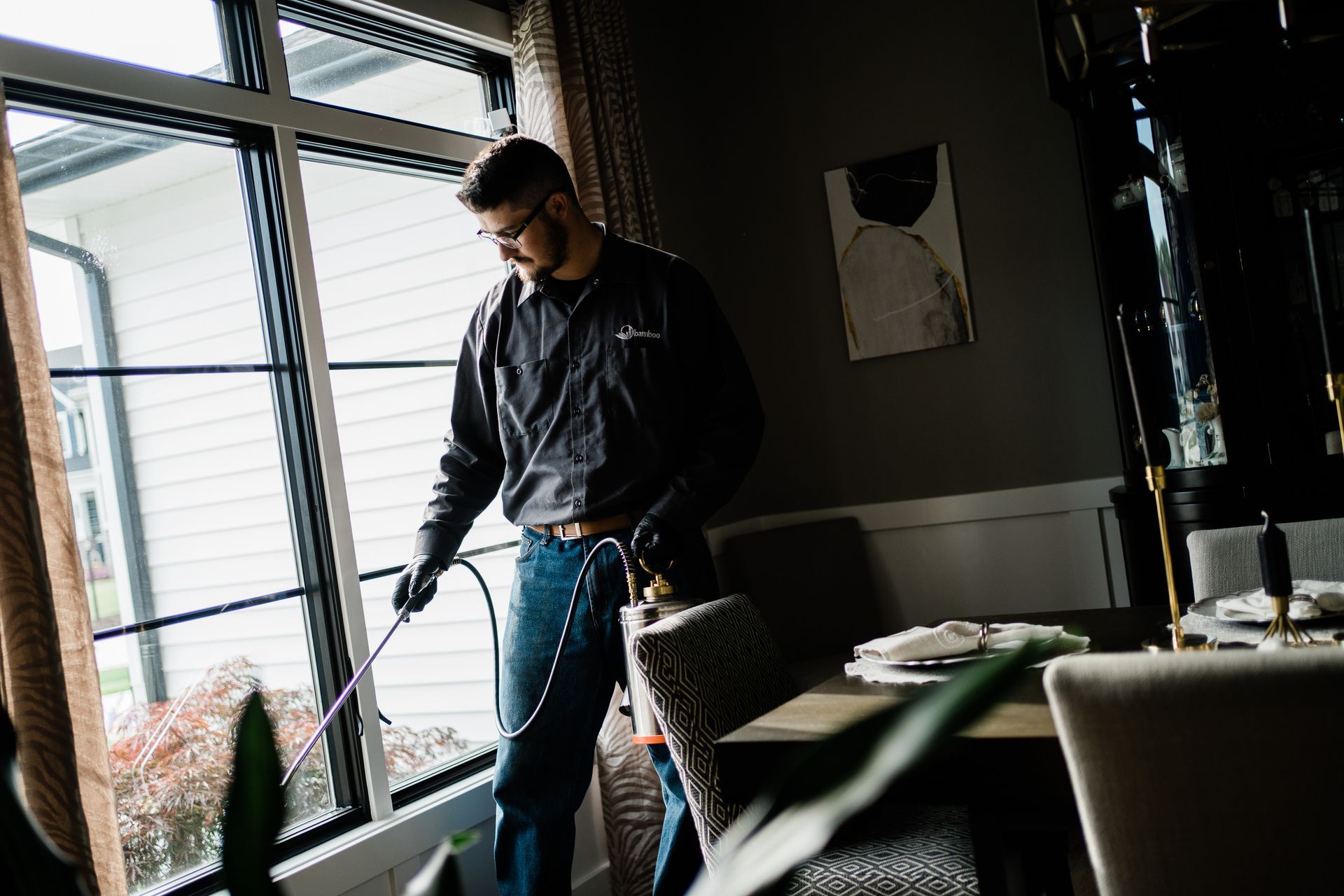
2. Kitchen and Pantry: A Prime Target for Pests
Inside the home, pest control professionals prioritize the kitchen and pantry. These areas are prime real estate for pests because of the abundance of food and moisture. Insects like ants, cockroaches, and pantry moths are often found in these spaces.
Technicians will spray along baseboards, under sinks, around cabinets, and near food storage areas to target and prevent pest infestations. They may also spray inside cabinets or behind appliances if there’s a known issue. By targeting these specific areas, pest control experts make it harder for pests to thrive where food is stored.
3. Bathrooms: A Moisture Magnet for Bugs
Bathrooms are another hot spot for pests. The moisture from sinks, showers, and toilets can attract pests like silverfish, ants, and drain flies. In these areas, pest control technicians focus their efforts around drains, pipes, and under sinks where moisture builds up.
Bathrooms often attract pests because they provide water—a necessary resource for survival. By spraying these areas, pest control professionals can break the cycle of reproduction and prevent bugs from making a home in your bathroom. This also helps disrupt pest breeding sites, which are often hidden in these damp places.
4. Bedrooms and Living Rooms: Handling Bed Bugs and Fleas
While bedrooms and living rooms are not typically overrun with pests, they can still become infested, especially if you have a bed bug or flea problem. In these cases, pest control specialists may spray around beds, furniture, and carpets to treat these pests.
Bed bugs and fleas are particularly challenging because they can hide in soft fabrics, crevices, and even inside mattresses. Spraying in bedrooms and living areas targets these specific pests and ensures they don’t spread. Pest control professionals may also use additional methods, like bed bug traps or flea treatments, to fully eradicate the problem.
5. Attics and Basements: Hidden Pests in Out-of-the-Way Spaces
Attics and basements are common hiding spots for pests like spiders, termites, and rodents. These areas are often less disturbed, providing a perfect space for pests to live undetected.
Pest control technicians will spray along the perimeter, focusing on access points like cracks, vents, and foundation areas. Attics and basements may also require special treatments for pests like termites, which can cause structural damage if left untreated. In some cases, pest control professionals may use baiting systems or dusting methods in addition to spraying to control infestations in these secluded areas.
6. Wall Voids and Crawlspaces: Targeted Treatments for Specific Pests
Some pests, like termites or ants, may hide in more hard-to-reach places, such as wall voids or crawlspaces. In these cases, pest control experts may need to inject spray into wall voids or other hidden areas where pests have made their nests.
Crawlspaces are also commonly treated to prevent termites and other wood-damaging pests from attacking the structure of your home. If you have a termite infestation, pest control professionals will focus on spraying the foundation and other affected areas to stop further damage.
7. Outdoor Structures: Sheds, Garages, and More
Don’t forget about outdoor structures like sheds, garages, and storage units. These spaces can also attract pests, especially if they are filled with clutter or provide shelter from the weather. Pest control technicians will often spray both the interior and exterior of these buildings to keep pests from making their way inside.
Garages and sheds are particularly vulnerable because they often contain wood, cardboard, and other materials that pests love. By treating these areas, pest control experts can prevent pests from using these outdoor spaces as a gateway to your home.
How to Prepare for Pest Control
If you have an upcoming pest control appointment, it’s a good idea to prepare your home to ensure the treatment is effective. Here are some tips to get ready:
- Clear the Perimeter: Remove items like plants or lawn furniture from the exterior of your home to give the technician easy access to the foundation and entry points.
- Move Kitchen Items: Remove food from countertops and store it in sealed containers. Clean up crumbs and spills that might attract pests.
- Tidy Up Bathrooms: Remove personal items from bathroom counters and clean up any standing water.
- Make Room in Bedrooms and Living Rooms: If you're dealing with pests like bed bugs or fleas, move furniture away from walls and vacuum thoroughly to prepare for treatment.
Want To Learn More? Contact Us
When pest control comes, they focus on strategic areas both inside and outside your home to ensure pests are eliminated and kept from coming back. From spraying the exterior perimeter and food storage areas to treating hidden spaces like attics, basements, and wall voids, pest control professionals take a thorough approach to keep your home pest-free. By understanding where they spray and preparing your home accordingly, you can ensure the treatment is as effective as possible.
Contact our team here at Bamboo Pest Control today to learn more about our pest control services.
Like this post? Share it here...

